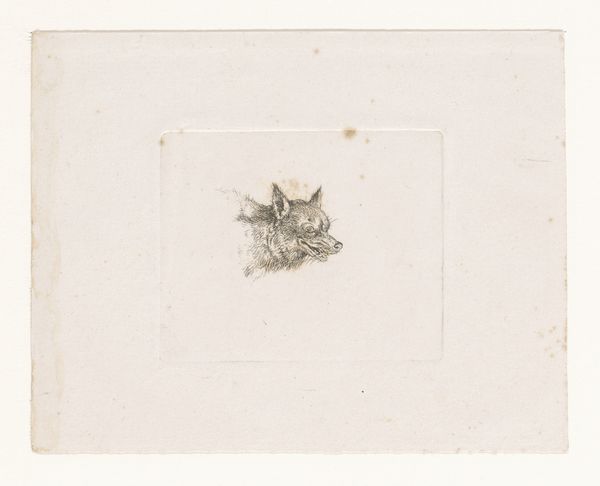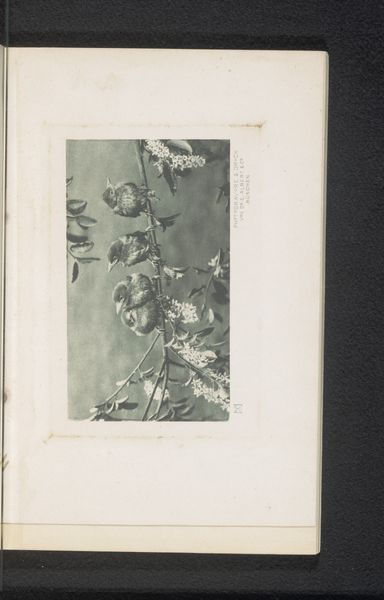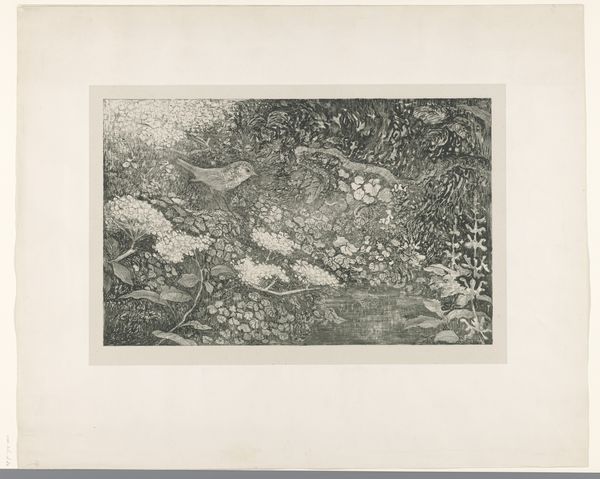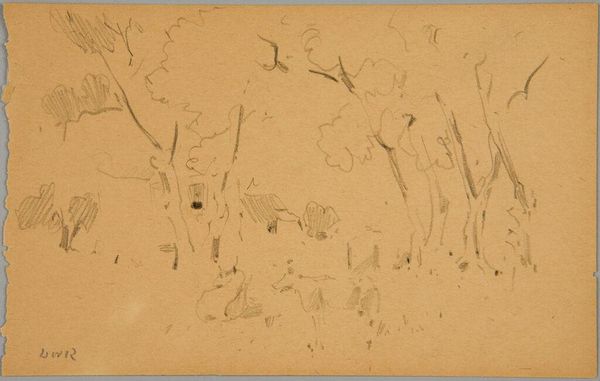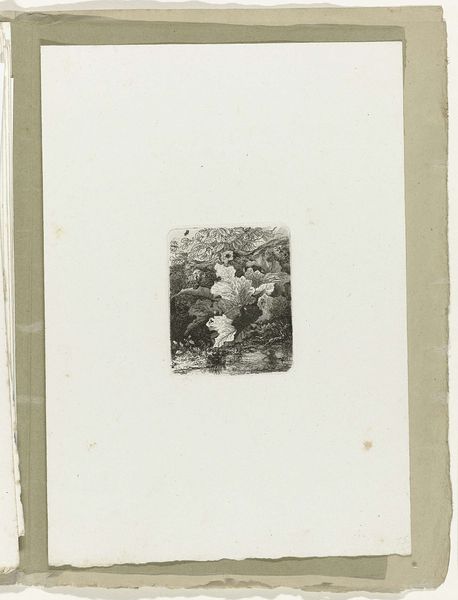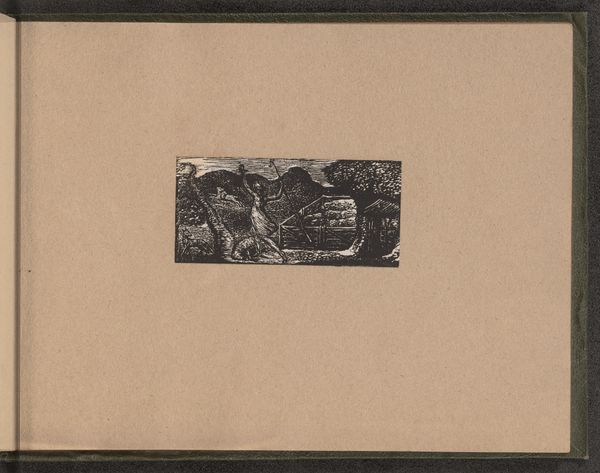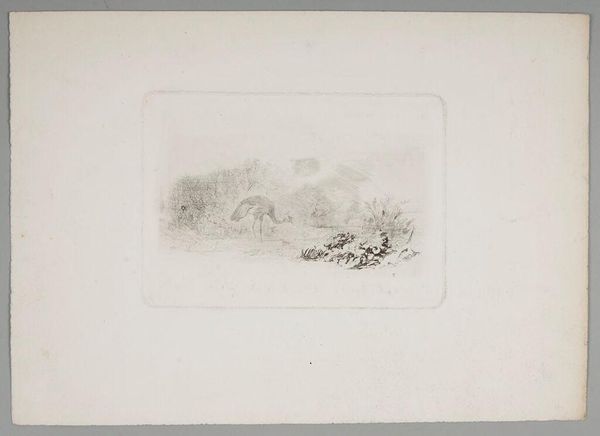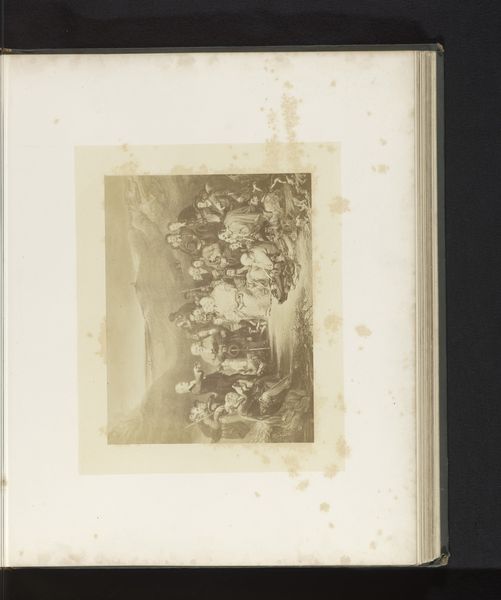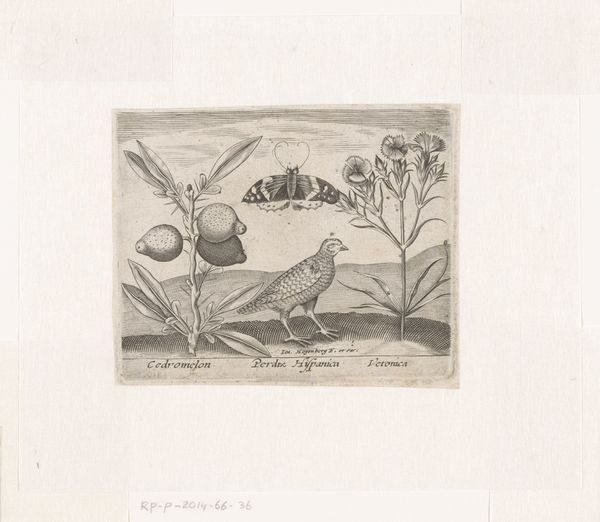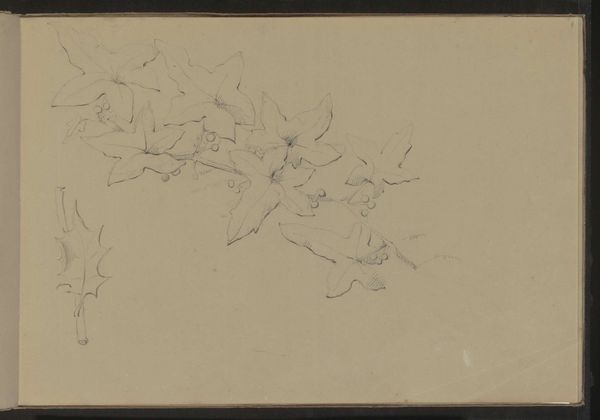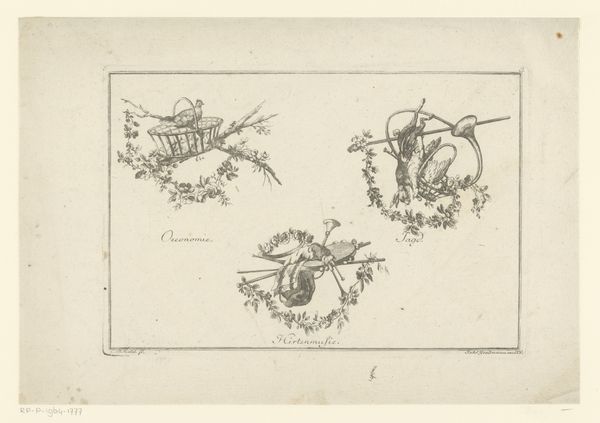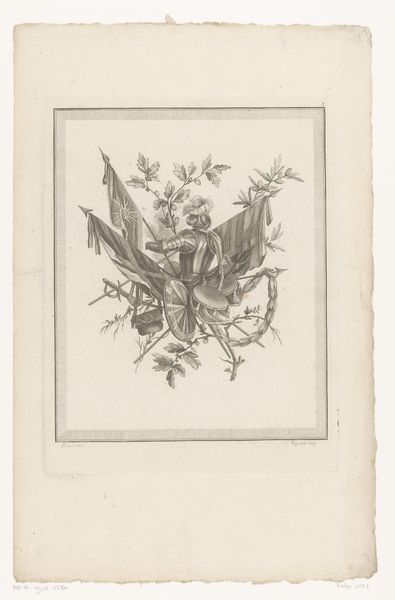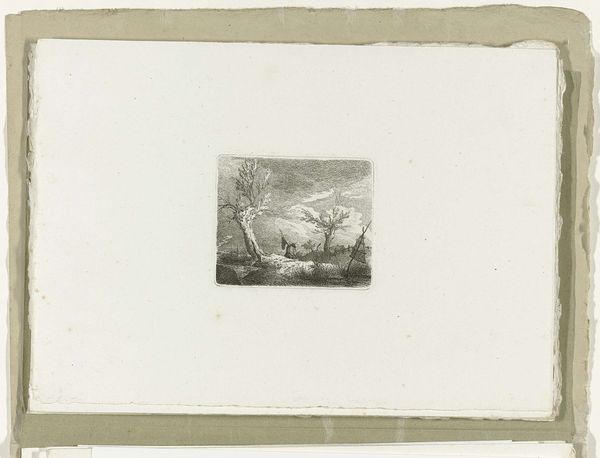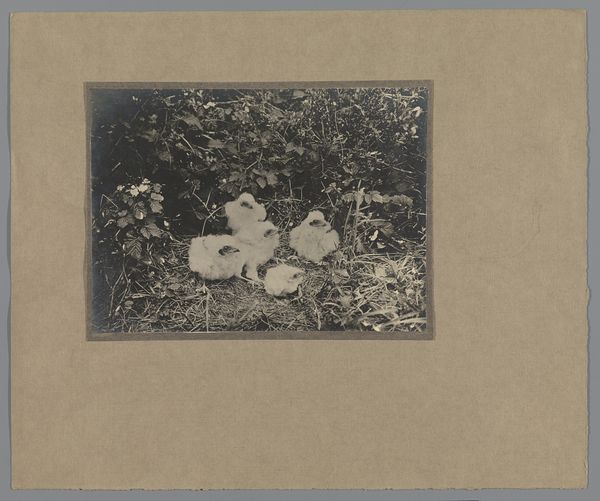
#
toned paper
#
childish illustration
#
egg art
#
ink paper printed
#
ink drawing experimentation
#
sketchbook drawing
#
watercolour bleed
#
watercolour illustration
#
sketchbook art
#
watercolor
Dimensions: height 179 mm, width 154 mm
Copyright: Rijks Museum: Open Domain
Curator: This compelling piece is titled "Insecten," created between 1875 and 1890 by C. Dietrich. It showcases an array of insects rendered on toned paper using watercolor and ink, presented as if meticulously documented within a sketchbook. Editor: It feels almost dreamlike, yet strangely clinical at the same time. The starkness of the insects against that soft, toned paper is visually striking, as if specimens pinned in an album page, rather than living, breathing creatures. Curator: Indeed. Dietrich’s choice of medium and presentation invites contemplation of how we categorize and study the natural world. It reflects a growing scientific interest of the late 19th century, where observation and classification were highly valued. Consider the socio-political context. Taxonomy and scientific illustrations were deeply implicated in colonial power and exploitation during this era. Editor: Right, the scientific gaze, categorizing and collecting nature's diversity. And the insects themselves… they’re not idealized or romanticized. Their form, textures, and sometimes unsettling anatomy, are unflinchingly presented in this depiction. It feels like it predates contemporary sensitivity toward naturalistic imagery. Curator: Absolutely, this art predates the large-scale advocacy for animal rights or ecological awareness. Its cultural position rests in scientific understanding and the human desire for knowledge acquisition. Furthermore, there is also this delicate interplay of nature versus artifice happening within the illustration—even something as factual as an ink drawing of insects, is essentially an artificial representation. Editor: It makes me wonder about accessibility too. Illustrations of nature were hugely impactful because it would be people’s first time getting this level of visual contact with insects. Considering access and equity, how would audiences have perceived these insects? Especially knowing that insect species also often impact communities differently due to agriculture and disease. Curator: That’s an incisive point. Our contemporary understanding is certainly informed by perspectives the original audience would likely not have possessed. Yet this photograph offers a portal to reflect on these differences. Editor: This album page certainly makes one reconsider the role of insects in shaping both ecological realities and how societies viewed nature at a pivotal moment.
Comments
No comments
Be the first to comment and join the conversation on the ultimate creative platform.
